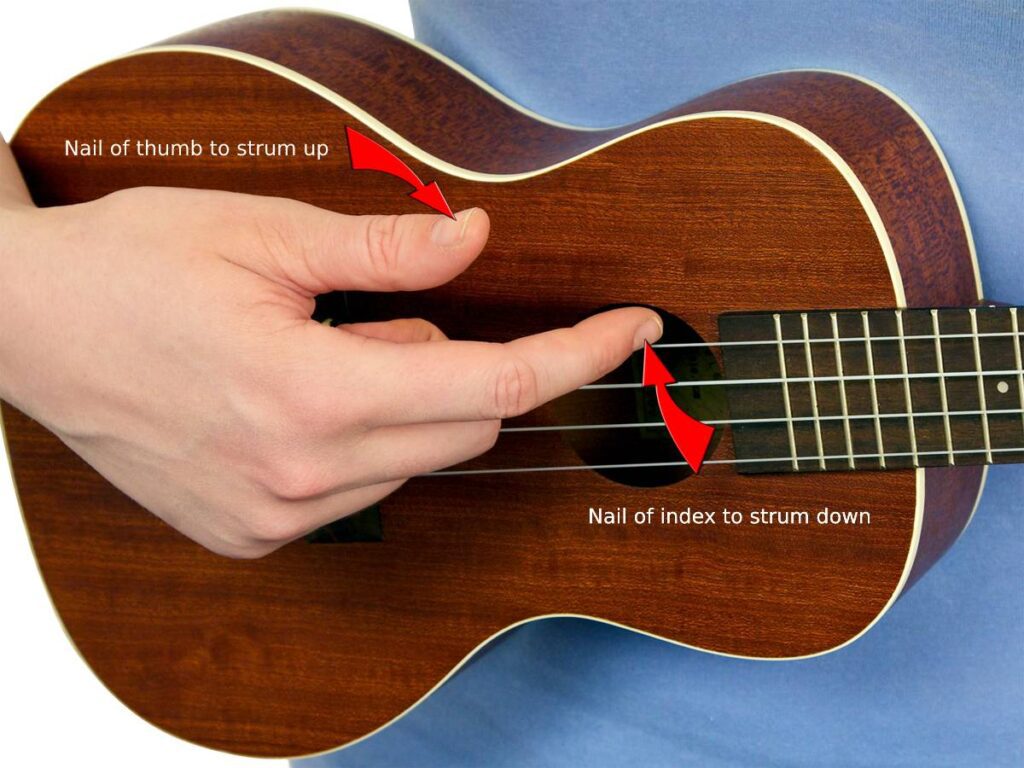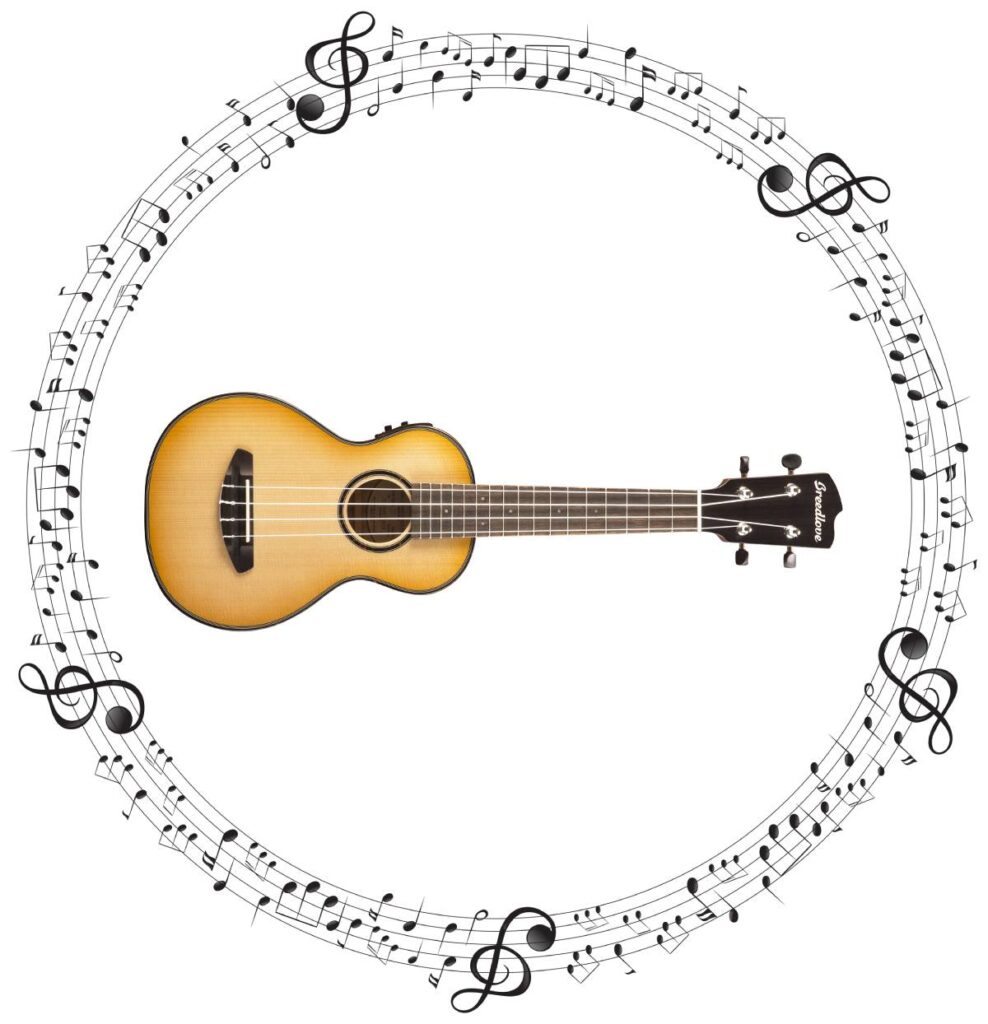
The purpose of this article is for ukulele players to understand the basics of music theory. The benefit of understanding ukulele music theory is that it will allow you to understand the concept of keys. This is important, because if you are interested in singing or performing with singers, then it is essential to know how to change keys.
What is a key in music and why is it important?
Many popular songs are written in the key of C, while others are in the Key of G or F and so on. Essentially, there is a key for each note. For ex, there is a key for C, C#, D, D# etc. Keys are made of scales that contain 7 different notes.
Keys are important for singing
Each singer has a unique tonal range, meaning they can only comfortably sing a specific range of high and low notes. Each singer’s range varies greatly. An easy example to illustrate this is to think of how men generally have a lower singing range than women.
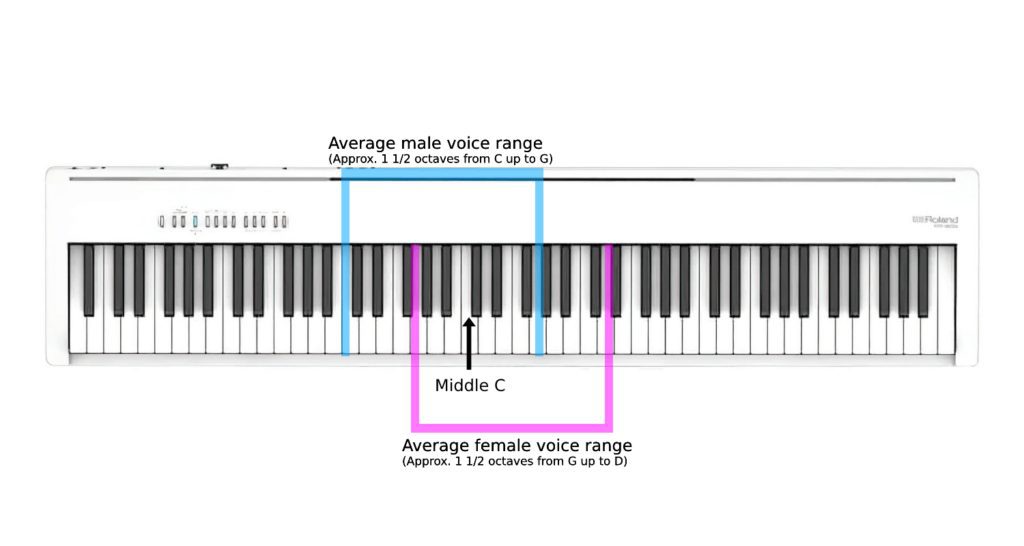
*Exercise: Find a keyboard and experiment with figuring out your vocal range. You’ll know you’ve found the limits of your range when the low or high notes start to sound forced.
Understanding the major scale
There are many types of scales, but the major scale is the most important and commonly used one, so we’ll start there.
The major scale in the key of C is: C-D-E-F-G-A-B-C (these notes make up the key of C major). On the Ukulele, it looks like this:

What makes this sequence of notes recognizable to the ear is the distance between the notes. On the ukulele, each fret is a semitone. Once you know the names of the 4 strings on the ukulele, you can figure out the note names by counting the semitones (it helps to use a piano).
Between C-D is a whole tone or T
D-E: whole tone or T
E-F semitone or S
F-G: T
G-A: T
A-B: T
B-C: S
It’s easy to visualize this on the piano, where if there’s a black note between the white notes, it means the distance is a tone (T). If there is no black note, then it’s a semitone (S). This sequence of intervals is common to each major scale: T-T-S-T-T-T-S.
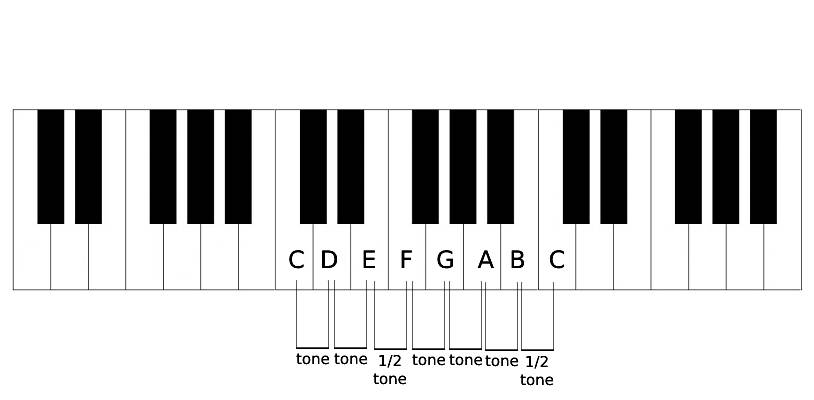
Now, if you take the note G and use the major scale intervals T-T-S-T-T-T-S. You’ll get
G-A-B-C-D-E-F#-G.
These are the notes of the Key of G.
To the ear, it will sound identical to the C major scale, because it has the same arrangement of intervals. Our minds will identify the distance between the notes, rather than hear the specific notes themselves (unless you have perfect pitch). For ex. most people can’t differentiate a C from a G note (unless you see the note being played), but almost everyone can hear the relationships between notes and recognize a major scale or the notes of a song.
How this relates to singing with a ukulele?
When learning to sing a song, you might find that the original key of the singer is too high for you to sing comfortably. To solve this problem, You can use a capo to bring the key up or down by a tone and see how the new range feels for your voice.
Alternatively, if the song is in the key of C, you can transpose (change keys) to G. You might find that the range of notes in the key of G works better for your voice.
Understanding chords
A chord is made up of at least 3 notes being played at the same time. A chord can be more than 3 notes, but it cannot be less. *2 notes being played at the same time is either a harmony or a power chord, but not a chord. Another aspect of chords is that they are built in 3rds.
*Don’t get confused by a chord being called a single letter like C. The chord carries the name of its lowest note (the root) even though it is made of 3 different individual notes (C-E-G).
Chords are built on the major scale
Let’s come back to the C major scale as an example and build chords from there.

Now let’s build thirds on these notes (3 notes apart). Notice how it looks like a snowman.

*The C, F, and G chords are major and the Dm, Em, Am are minor. What makes a chord minor or major chords is the distance between the middle note of the chord (the 3rd) and the bottom note (the root).
*This sequence of Major, minor and diminished chords is the same for each major scale.
Scale Degrees
Musicians will number the notes of the scale as degrees rather than name them as letters. This helps them to better identify the corresponding chords in different keys.
To highlight which chords are minor and major chords, roman numerals are used.
For ex:

I – ii-iii-IV-V-vi-vii
These scale degrees help us easily transpose from one key to another.
To illustrate: If a pop song has the following chord progression
C-Am-F-G
We can quickly figure out the relative chord number for each chord.
They are: I-vi-IV-V in C.
Now if we want to play that song in the Key of G, we know that the new chord progression will be
G-Em-C-D, which is I-vi-IV-V in G.
At this point, If you are thinking “If there are 12 keys then that’s a lot to remember.” Don’t worry too much, because most popular songs on the guitar or ukulele are played in 3 or 4 keys. They are C, G, F, and A.
Furthermore, the more songs you learn, the more you realize that certain chord progressions are used everywhere.
Various arrangements of the following chords are used everywhere in popular music: I-iv-IV-V
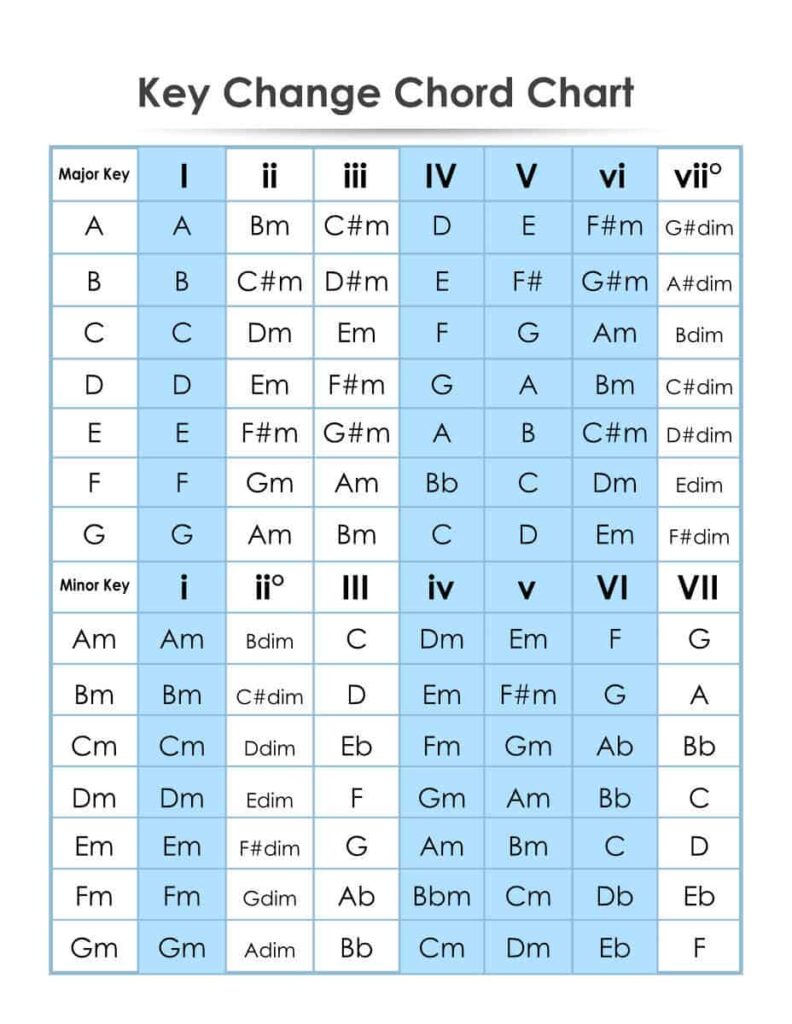
Real world ukulele music theory example: Let it Be
Let’s take Let it Be and figure out how to change keys with it.
The song starts with this chord progression in C and we want to try it in the Key of G, because it may fit our voice better.
The chords in the verse are:
C-G-Am-F-C-G-F-C
So the roman numerals would be:
I-V-vi-IV-I-V-IV-I
Now let’s try that in the key of G.
I = G
V = D
vi = Em
IV = C
So, our Let it Be chord progression in G is now:
G-D-Em-C-G-D-C-G
Try this for yourself
Now attempt this exercise with a song that you are interested in. Don’t settle for the key that someone else wrote and put up online or the one that worked for the singer that originally sang it. Experiment and find the key that is right for your unique voice.
In Conclusion
Learning a bit of ukulele music theory will help you become a better player, because you’ll have a greater understanding of the instrument.
- To find a ukulele teacher in Montreal, visit: Ukulele lessons Montreal
- If you’re interested in finding a teacher in Vancouver, visit Ukulele lessons Vancouver
- Looking for a teacher in Toronto? Ukulele lessons Toronto


